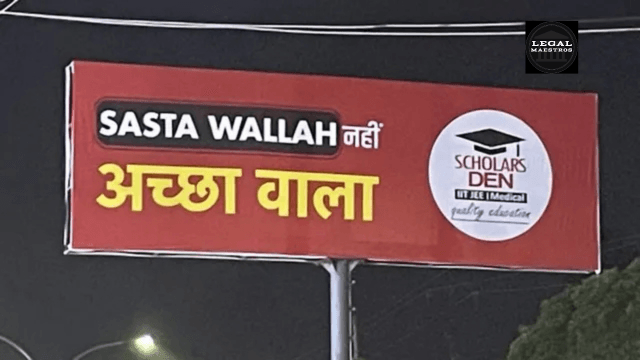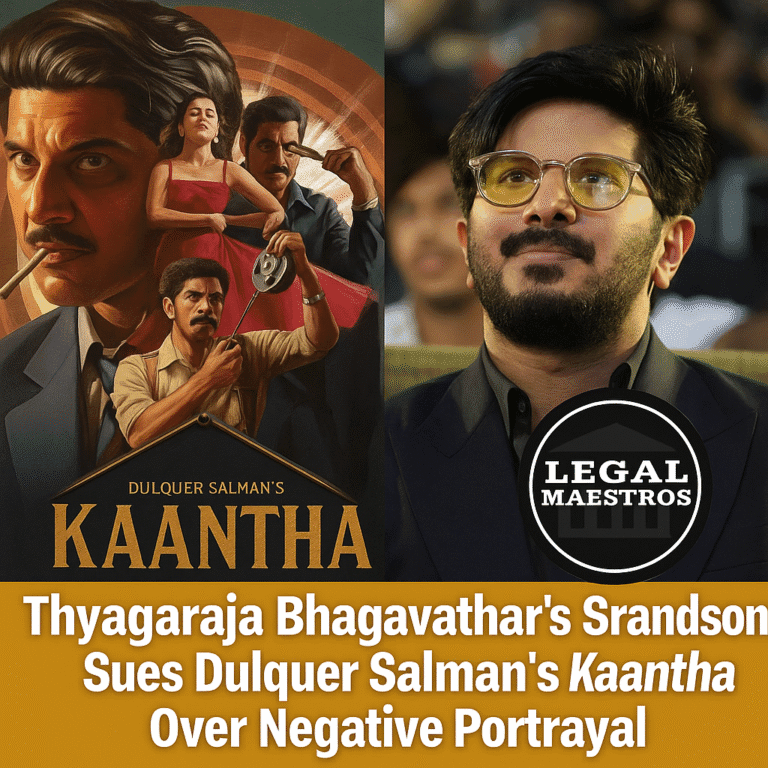
Sasta Wallah ’Controversy: Delhi HC Refers Physics Wallah Case to Mediation Centre
Introduction
In a matter of weeks ago, the founders of an education app referred to as Sasta Wallah were in some trouble because Physics Wallah, a reputable online coaching organization, accused them of having the name of their app too close to their liking.
Rather than immediately engaging in courtroom warfare, the Delhi High Court resolved to commit both parties to the Mediation center of the court. This action demonstrates how the court appreciates that most conflicts are most effectively addressed and resolved when people talk instead of taking a case to court as a long-term process.
The Background of the ‘Sasta Wallah’ Controversy
Physics Wallah started as a small YouTube channel and is now a big online tutoring platform. When Physics Wallah found another group that introduced something called Sasta Wallah, or, in other words, a cheap teacher, they claimed that it might lead to confusion among students and damage their image.
For any queries or to publish an article or post or advertisement on our platform, do call at +91 6377460764 or email us at contact@legalmaestros.com.
Think about two neighbors opening tea shops on the same street, one with the name of Tea Time and the other The Tea Time. Other clients may enter the wrong store unintentionally, which is the reason the original owner gets annoyed. This is a mild example of the reason why Physics Wallah decided to affirm its brand.
Why the Delhi High Court Chose Mediation
The judges did something unusual when the case was brought before the Delhi High Court. Instead of registering the dispute at a straight hearing, they issued the case to the Mediation Center of the court under Section 89 of the Code of Civil Procedure, 1908.
This section informs courts that in cases permeated with questions that may be resolved via compromise, such as intellectual property, they are to consider attempting alternate dispute resolution (ADR) options, such as mediation. In Section 89, parties are advised to agree on middle ground without the ordeal of going to court.
For any queries or to publish an article or post or advertisement on our platform, do call at +91 6377460764 or email us at contact@legalmaestros.com.
What Section 89 of the Code of Civil Procedure Means
The legal jumping point of mediation is S. 89. It states that where a situation seems to be settling down, the court must come up and order the parties to:
Mediation services or conciliating services.
The courts or Lok Adalat can reach a settlement.
For any queries or to publish an article or post or advertisement on our platform, do call at +91 6377460764 or email us at contact@legalmaestros.com.
Alternative forms of Alternative Dispute Resolution (ADR) are also available.
In layman’s terms, Section 89 would be equivalent to a traffic sign giving drivers a direction to a side street that is not crowded when there is heavy traffic on the main road. It pushes litigating parties out of the slow tracks of the open litigation system and moves them to a quicker and more collaborative track.
How Mediation Works in Practice
Mediation is facilitated negotiation in which a neutral party assists both parties and allows them to discuss the issues. Imagine two siblings fighting about who will have the last piece of the cake. To avoid shouting, they call a friend to come and listen and propose to share the cake half and half.
For any queries or to publish an article or post or advertisement on our platform, do call at +91 6377460764 or email us at contact@legalmaestros.com.
The friend does not determine what is wrong or right, but they assist the siblings in working out a solution that the two can agree with. In the Mediation Centre of the Delhi High Court, the job of that friend is done by trained mediators so that conversations are not diverted and affairs are handled in a fair manner.
Benefits of Mediation for Brand Disputes
Mediation will help the Sasta Wallah and Physics Wallah save both time and financial resources. In litigation, the attorneys submit numerous documents and participate in several hearings and it may take several months before judgment is given.
The process can be likened to having to wait in long queues at a driver license office with heaps of paperwork on the desk. In contrast to mediation, it can be set up expeditiously, and often, it could be completed within a couple of sessions. Also, both firms can protect sensitive business information due to the talks’ privacy.
For any queries or to publish an article or post or advertisement on our platform, do call at +91 6377460764 or email us at contact@legalmaestros.com.
Illustration: The Neighbourhood Signboard Dispute
Take a scenario of two neighbors dealing in homemade pickles. One of the neighbors has painted a lovely yellow sign saying, Grandma Pickles. The other neighbor creates a nearly identical yellow sign that says, Granny Pickles.
Customers and shopkeepers become confused as customers move back and forth, resulting in orders being filled at the wrong shop. Instead of suing one another, they come together in their community center.
The role of a mediator is to listen, and in this case, the mediator can agree with one shopkeeper to add a red stripe to their sign while the other agrees to switch their font style. In no time, there were no customer errors, and the two stores prospered. As demonstrated in this story, mediation under Section 89 can transform an impasse into a win-win solution.
For any queries or to publish an article or post or advertisement on our platform, do call at +91 6377460764 or email us at contact@legalmaestros.com.
Conclusion
The recent ruling of the Delhi High Court brings out an alternative transition in the Indian judicial system by referring the so-called Sasta Wallah case to mediation. Using Section 89 of the Code of Civil Procedure, 1908, the court wanted to remind everyone that common troubles are normally solved well with common talks.
A mediator, much like a cordial referee who calms two arguing children, can help businesses like Sasta Wallah and Physics Wallah reach an amicable solution without damaging relations or reputations or wasting resources.
For any queries or to publish an article or post or advertisement on our platform, do call at +91 6377460764 or email us at contact@legalmaestros.com.


![JOB POST: Junior Associate at ASM Law Chambers, Jaipur [Freshers]](https://legalmaestros.com/wp-content/uploads/2025/11/Gemini_Generated_Image_8wrxer8wrxer8wrx-768x708.png)

